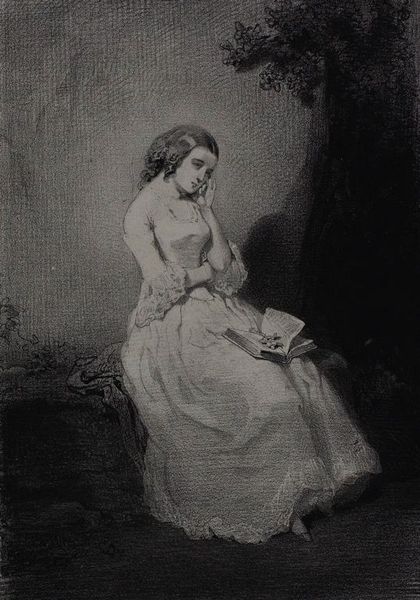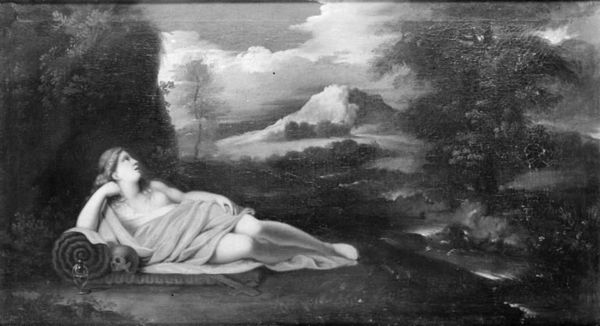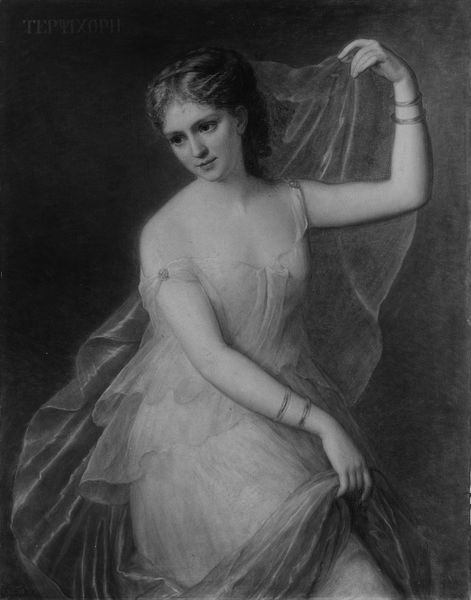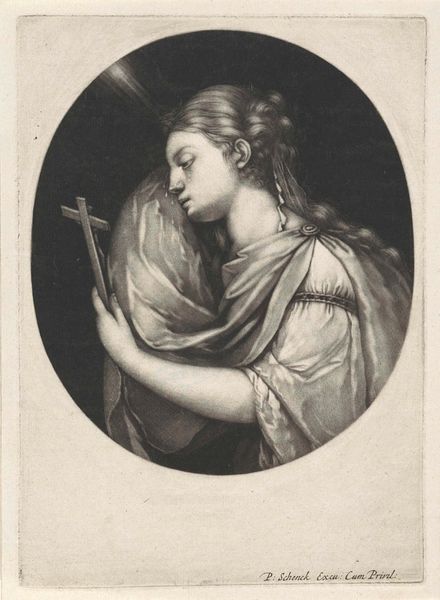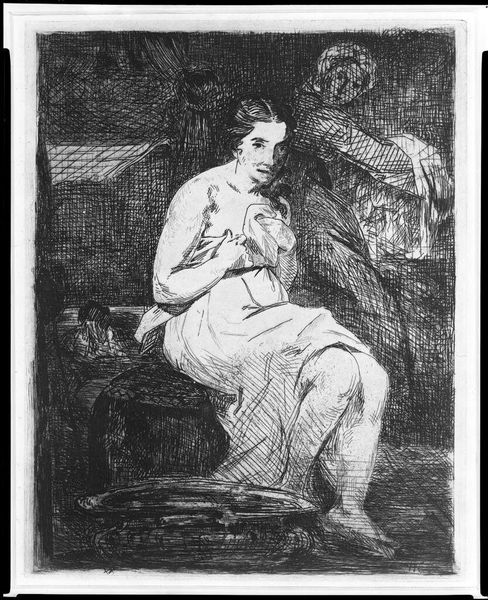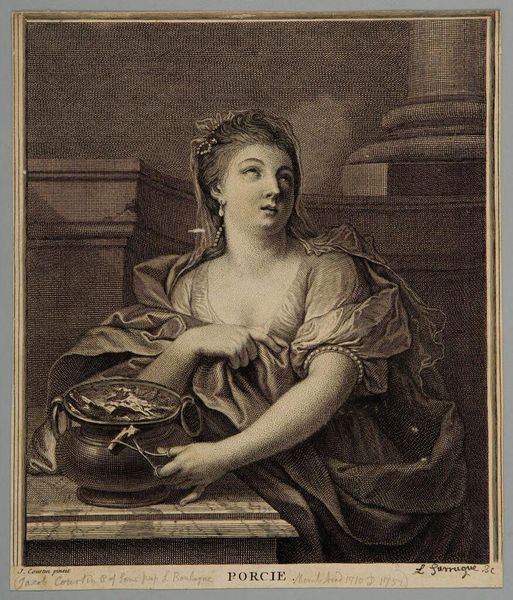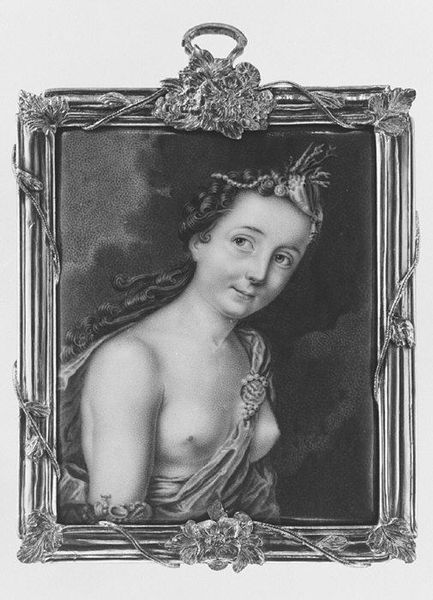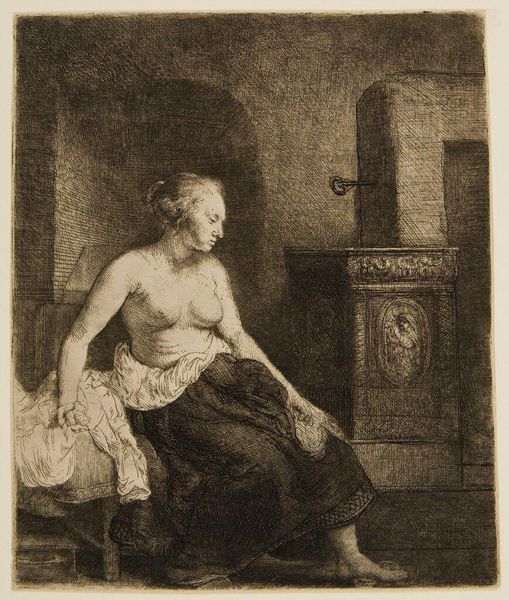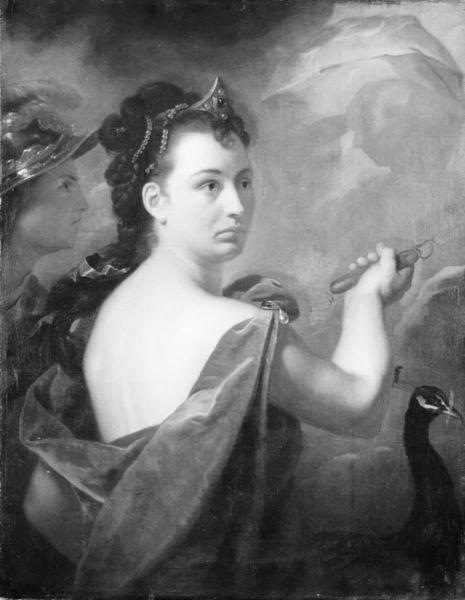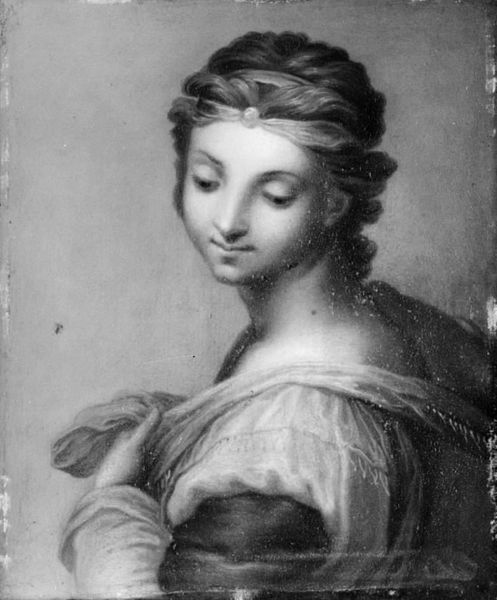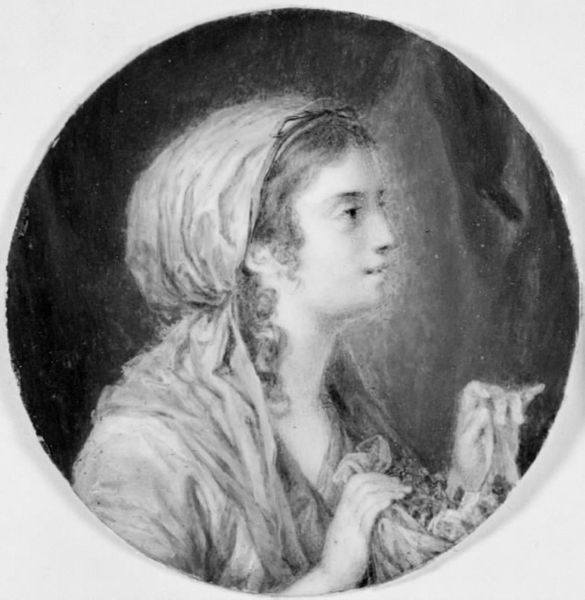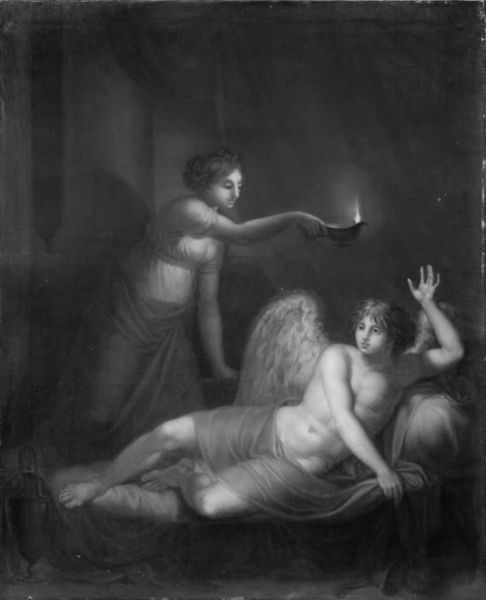
Dimensions: 11 cm (height) x 8 cm (width) (Netto)
Curator: Oh, this has a somber tone. The light seems to drain even the subject’s expression, don’t you think? Editor: It's more nuanced than that. We’re looking at Jens Juel's "En kurtisane," or "A Courtesan," created around 1788. Oil on canvas, if I’m not mistaken. This portrait resides at the SMK, the National Gallery of Denmark. The title and date position it in the world, but beyond that… What draws your eye? Curator: The drapery, naturally. It feels almost carelessly arranged, slipping off her shoulder, suggestive but… restrained. There’s a vulnerability in her gaze, but also a defiance. Those objects arrayed on the table; the necklace? There's definitely symbolic weight at play here. I feel like the necklace and the robe suggests a false freedom, as though the light reveals rather than liberates. Editor: A courtesan in this era held a peculiar position, a figure of societal intrigue and paradox. Though rendered here in monochrome, consider the social "colors" she inhabited. She existed on the periphery of legitimate society, educated and refined, yet bound by economic realities to a world of commerce and desire. Is Juel highlighting this conflict in this painting, this moment of exposure to light but lack of personal liberty? The necklace is perhaps one of the tools or assets she had. Curator: It's certainly a loaded portrayal. Note the garland crowning her hair, its delicate texture contrasting with what we perceive to be an interior life—or perhaps one meant for display. Are we, the viewers, complicit in the exchange— the politics —that led to this depiction, our cultural inheritance demanding a price from her image? Editor: Precisely! Think of the context of display in the late 18th century. A portrait like this wasn’t simply hung on a wall; it enacted and reflected social codes. It negotiated between private desires and public representation. It's also interesting, given the Rococo era in which the painting emerged and the genre-painting themes it used, that such intimacy would be public rather than purely private, but in an accepted way. Curator: So, while this painting, like any, could serve as simply aesthetic art, it also gives us a visual reminder that some imagery and portraits hold more political and social impact than others. Editor: I agree. It reminds us of the visual language used to understand our history and ourselves.
Comments
No comments
Be the first to comment and join the conversation on the ultimate creative platform.
